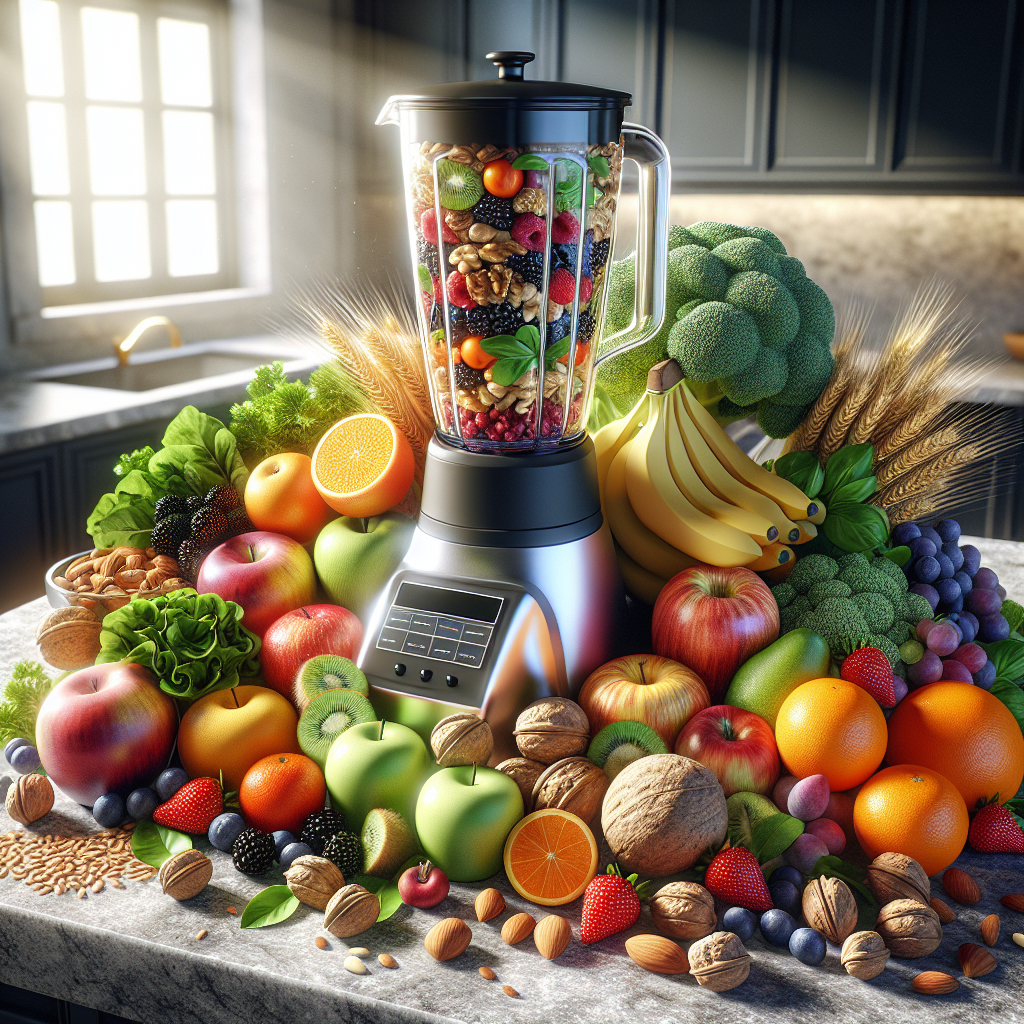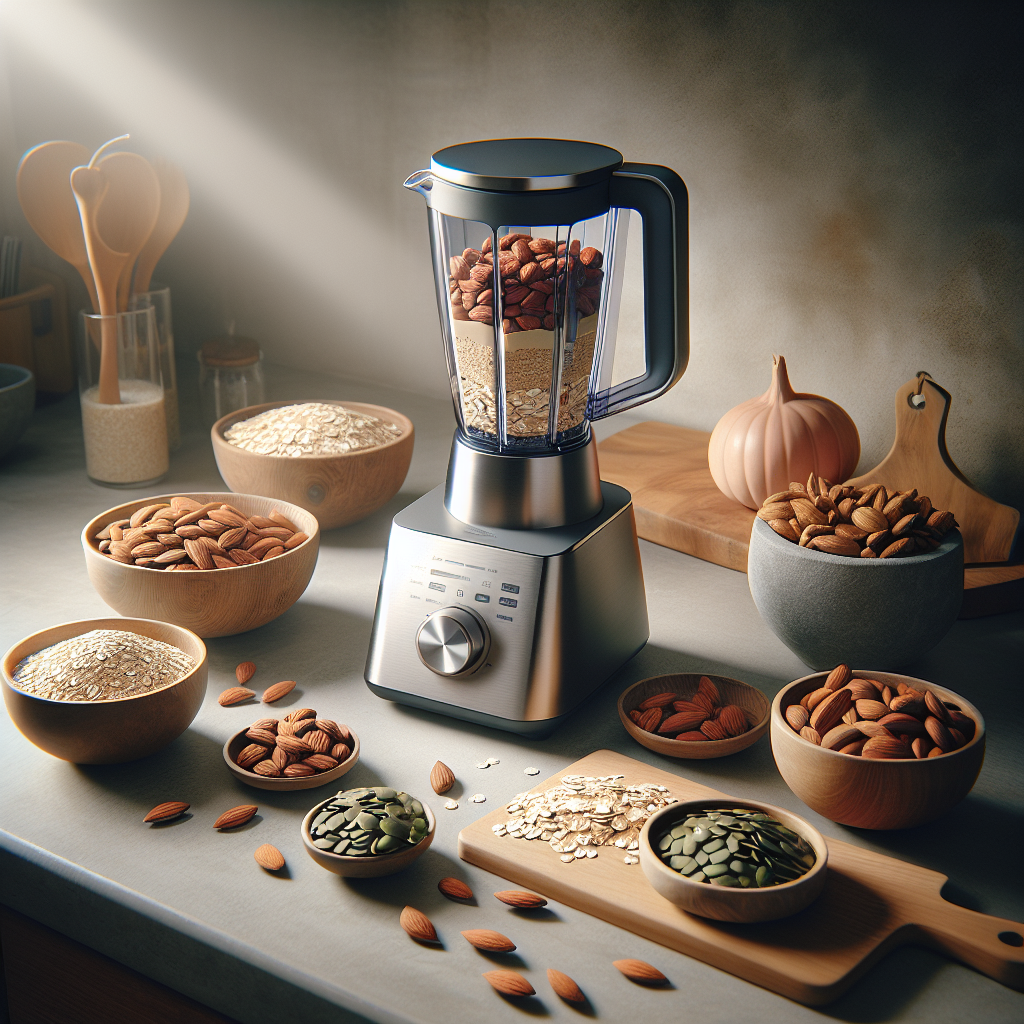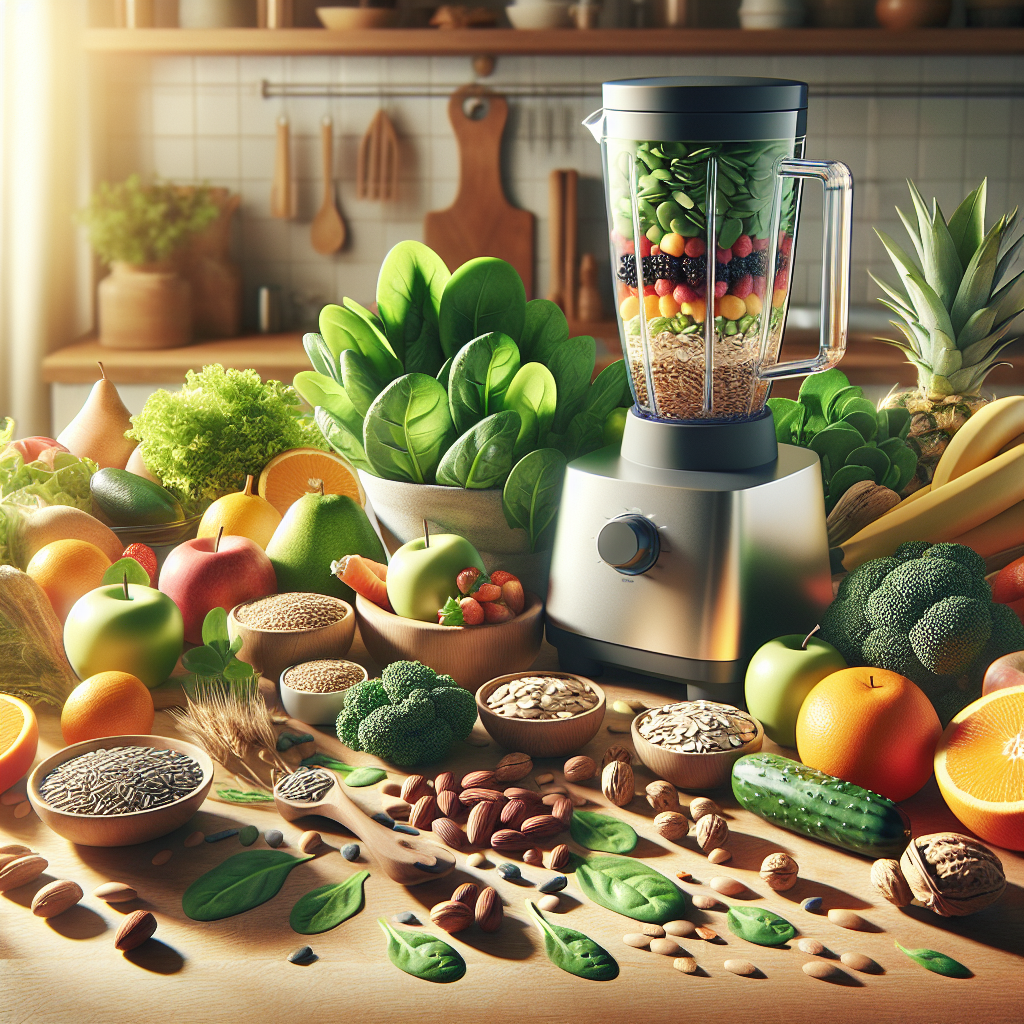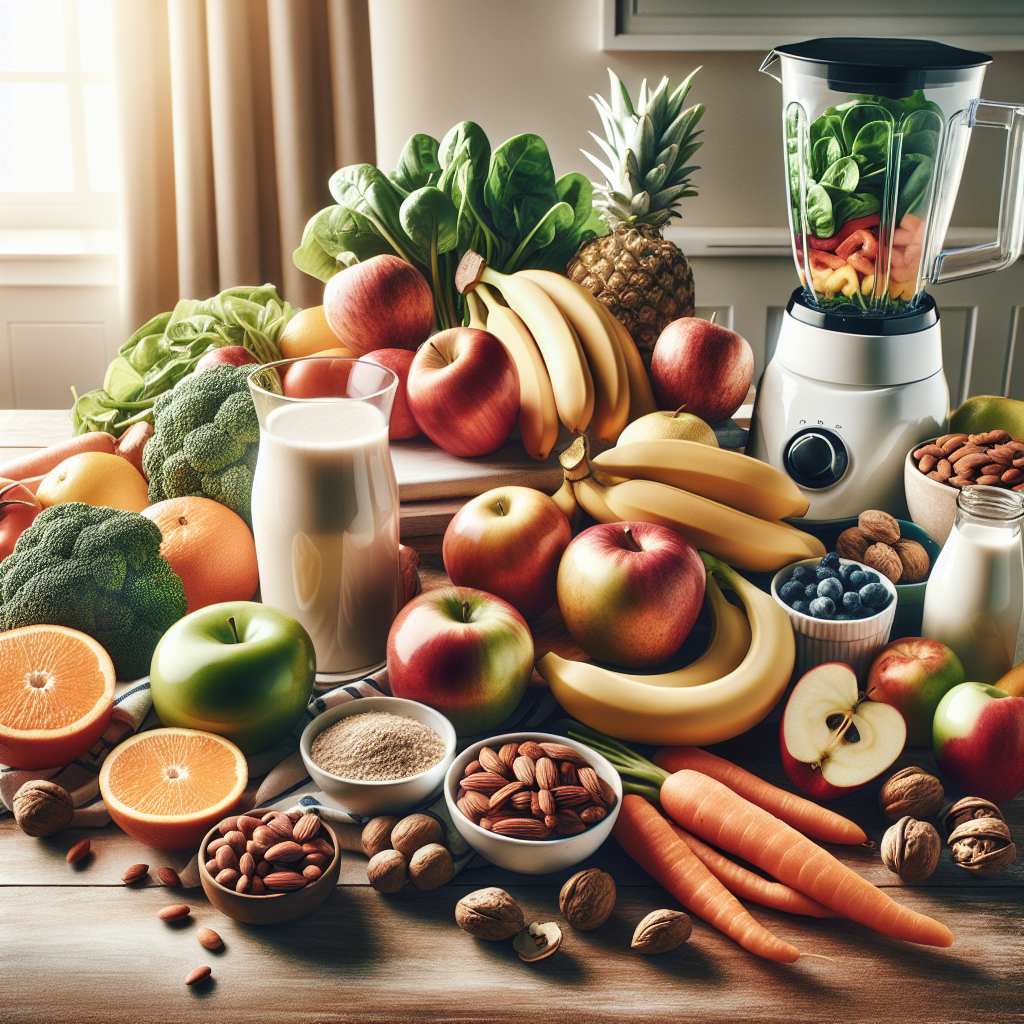Understanding the nutritional content of the food we consume is crucial for maintaining a healthy lifestyle. Nutritional content refers to the composition of food in terms of essential nutrients like proteins, carbohydrates, fats, vitamins, and minerals. Each of these components plays a significant role in our body's overall functioning and well-being.
By being aware of what we eat, we can make informed decisions that support our health goals, whether it's weight management, muscle building, or simply ensuring a balanced diet. For instance, knowing the carbohydrate content in foods can help manage blood sugar levels, while understanding fat content is essential for heart health.
Incorporating nutrient-dense foods into your daily diet can lead to numerous health benefits, such as improved energy levels, better mental health, and reduced risk of chronic diseases. On the other hand, consuming foods with poor nutritional content can lead to deficiencies and health issues.
With the rise of processed foods, it's more important than ever to pay attention to what goes into our bodies. Labels on food packaging can be a great resource, but making your own food at home, where you control the ingredients, is even better.
One way to ensure you're getting the best nutritional content is by using innovative kitchen tools like the MilkDepot.com's milk-making blender. Not only does it allow you to create fresh, nutrient-rich milk from nuts, grains, or seeds, but it also helps you avoid additives and preservatives commonly found in store-bought options. Get yours today! and start your journey to healthier living.
Key Nutrients in Common Foods
When delving into the nutritional content of your food, it's essential to recognize the key nutrients that our bodies need to function optimally. Here’s a closer look at some of the most critical nutrients found in common foods:
- Proteins: Essential for muscle repair and growth, proteins are found in foods like meats, dairy products, legumes, and nuts. Incorporating a variety of protein sources can help ensure you get all the essential amino acids your body needs.
- Carbohydrates: The body’s primary energy source, carbohydrates are present in foods such as grains, fruits, vegetables, and legumes. Opt for complex carbohydrates like whole grains and vegetables for sustained energy.
- Fats: Necessary for brain health and hormone production, healthy fats can be found in avocados, nuts, seeds, and fatty fish like salmon. It's important to choose unsaturated fats over trans and saturated fats.
- Vitamins: Vital for various bodily functions, vitamins are abundant in fruits, vegetables, and fortified foods. For example, oranges are rich in vitamin C, while leafy greens provide ample vitamin K.
- Minerals: Minerals such as calcium, potassium, and iron are crucial for bone health, muscle function, and oxygen transport. Dairy products, bananas, and spinach are excellent sources of these minerals.
- Fiber: Found in fruits, vegetables, whole grains, and legumes, fiber is essential for digestive health and can help regulate blood sugar levels.
By understanding and incorporating these key nutrients into your diet, you can ensure your body gets the essential building blocks it needs to thrive. Remember, variety is key, so aim to eat a balanced mix of these nutrient-rich foods every day.
Importance of Reading Nutrition Labels

Understanding the nutritional content of your food goes beyond knowing the key nutrients; it also involves being adept at reading nutrition labels. Nutrition labels provide a wealth of information that can help you make informed choices about what you consume. Here’s why reading them is so important:
- Portion Control: Nutrition labels indicate the serving size and the number of servings per container. This information is crucial for managing portion sizes and avoiding overeating.
- Calorie Awareness: By checking the calorie content, you can better manage your daily caloric intake. This is particularly useful for those aiming to lose, gain, or maintain weight.
- Macronutrient Breakdown: Labels provide details on the amount of protein, carbohydrates, and fats in a serving. This helps you balance your macronutrient intake according to your dietary needs.
- Identifying Added Sugars: Many processed foods contain added sugars that can contribute to various health issues. Nutrition labels help you identify and limit your intake of added sugars.
- Sodium Content: High sodium intake is linked to hypertension and heart disease. By reading labels, you can choose foods with lower sodium levels.
- Ingredient List: The ingredient list helps you identify additives, preservatives, and potential allergens. Opt for products with shorter, simpler ingredient lists to avoid unnecessary chemicals.
- Daily Value Percentages: These percentages help you understand how the nutrients in a serving of food contribute to your daily recommended intake, guiding you toward a balanced diet.
By taking the time to read and understand nutrition labels, you empower yourself to make healthier food choices. This practice not only supports better physical health but also fosters a more mindful and informed approach to eating.
How to Make Healthier Food Choices

Making healthier food choices is pivotal for maintaining good health and overall well-being. With a myriad of options available, understanding how to choose foods that support your nutritional needs can be daunting. Here are some practical tips to guide you:
- Opt for Whole Foods: Whole foods like fruits, vegetables, whole grains, nuts, and seeds are packed with essential nutrients and are free from additives and preservatives. They should form the cornerstone of your diet.
- Read Nutrition Labels: As discussed earlier, nutrition labels provide critical information about what is in your food. Use them to compare products and choose those with lower added sugars, sodium, and unhealthy fats.
- Limit Processed Foods: Processed foods often contain high levels of unhealthy fats, sugars, and sodium. Prioritize minimally processed or unprocessed foods to reduce your intake of these unhealthy components.
- Choose Healthy Fats: Not all fats are bad. Opt for foods rich in unsaturated fats, such as avocados, nuts, and olive oil, and limit your intake of saturated and trans fats found in fried foods and baked goods.
- Watch Your Portions: Even healthy foods can contribute to weight gain if consumed in large quantities. Be mindful of portion sizes and listen to your body's hunger and fullness cues.
- Stay Hydrated: Water is essential for almost every bodily function. Aim to drink plenty of water throughout the day and limit sugary drinks and sodas.
- Plan Your Meals: Planning meals ahead of time can help you make healthier choices and avoid the temptation of fast food or unhealthy snacks. Include a variety of foods to ensure a balanced intake of nutrients.
- Be Mindful of Special Dietary Needs: If you have specific dietary requirements, such as gluten-free, dairy-free, or vegetarian, ensure that your food choices meet these needs without compromising on nutrition.
Incorporating these tips into your daily routine can significantly improve your diet and contribute to long-term health benefits. Remember, small, consistent changes can make a big difference in your overall health.
Benefits of Homemade Nut and Grain Milks

Homemade nut and grain milks are gaining popularity as a nutritious and eco-friendly alternative to dairy and commercially produced plant-based milks. Here are some of the key benefits of making your own nut and grain milks:
- Customizable Nutrition: When you make your own milk, you have complete control over the ingredients and can tailor it to your nutritional needs. Whether you want to add more protein, vitamins, or minerals, the choice is yours.
- No Additives or Preservatives: Store-bought milks often contain additives, preservatives, and sweeteners. Homemade versions are free from these unwanted extras, making them a healthier option.
- Freshness: Freshly made nut and grain milks retain more nutrients and have a better taste compared to their commercially processed counterparts. You can enjoy the rich, natural flavors without any artificial enhancements.
- Eco-Friendly: Making your own milk reduces packaging waste and lowers your carbon footprint. By choosing homemade options, you contribute to a more sustainable lifestyle.
- Cost-Effective: Store-bought plant-based milks can be expensive. By making your own, you can save up to 90% of the cost, maximizing your budget while still enjoying a high-quality product.
- Allergy-Friendly: For those with allergies or intolerances, homemade milks offer a safe alternative. You can avoid cross-contamination and ensure that your milk is free from allergens.
- Unlimited Flavor Options: Experiment with different nuts, grains, seeds, and flavorings to create unique milk blends. From almond to oat to quinoa, the possibilities are endless, allowing you to customize flavors to your preference.
- High-Quality Ingredients: You can choose high-quality, organic ingredients for your homemade milk, ensuring that you are consuming the best possible product.
By making your own nut and grain milks, you can enjoy a healthier, more sustainable, and cost-effective alternative to store-bought options. Plus, the process can be a fun and rewarding experience that allows you to experiment with different flavors and ingredients.
Using MilkDepot.ca Blender for Nutritional Benefits

When it comes to maximizing the nutritional benefits of homemade nut and grain milks, MilkDepot.ca's unique blender stands out as an indispensable tool in your kitchen. Designed to turn any nut, grain, or seed into fresh filtered milk in less than 60 seconds, this revolutionary appliance offers numerous advantages:
- Efficient Nutrient Extraction: The powerful motor and built-in filtration system ensure that you get the maximum nutrients from your ingredients. This means more vitamins, minerals, and healthy fats in every glass of milk.
- Time-Saving: In just under a minute, you can produce fresh, homemade milk. This convenience is perfect for busy individuals and families who want to maintain a healthy diet without spending hours in the kitchen.
- Versatility: Whether you're making almond milk, oat milk, or experimenting with exotic seeds, the MilkDepot.ca blender handles it all. This versatility allows you to explore and enjoy a variety of flavors and nutritional profiles.
- Eco-Friendly: By using the MilkDepot.ca blender, you reduce your reliance on store-bought milk cartons and packaging, contributing to a more sustainable environment.
- Cost-Effective: Given that you can save up to 90% of the cost compared to store-bought milk, this blender is not only a health investment but also a financial one.
- Ease of Use: The intuitive design and high-quality stainless steel construction make it easy to operate and clean, ensuring that you can quickly prepare your homemade milk without any hassle.
Incorporating the MilkDepot.ca blender into your kitchen not only enhances the nutritional value of your homemade milks but also simplifies the process, making it accessible to everyone. If you're looking to make healthier choices and enjoy the benefits of fresh, additive-free milk, this blender is a must-have.
Get yours today! and start enjoying the nutritional benefits of homemade nut and grain milks with ease.
